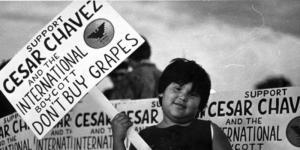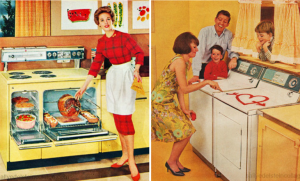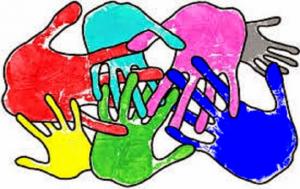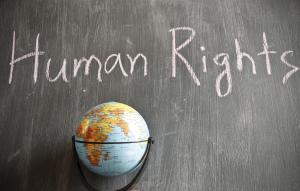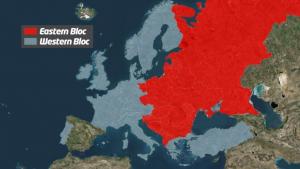
Individual Catholics came through the Second World War in powerful positions in political parties that were, in name or in spirit, Christian Democrats. They argued opposite sides of major political issues. Some pushed strongly for federalism and world government that would include Communist countries. Others took up the anti-Communist banner and argued for strong nation-states and military preparedness. The shape of the world since then shows which side one out in the end.
Jacques Maritain – his influence and ultimate failure – occupies the center of James Chappel’s fourth chapter in Catholic Modern, “The Birth of Christian Democracy, 1944-1950.” Chappel details his lasting influence and practical failure in three areas—the Jewish question, relations with Communist countries, and the properly limited place of nation-states.
The Jewish Question gets sidelined.
Maritain believed the Church needed to “liberate itself from the sin of racism.” (152) French President Charles de Gaulle insisted, and Pius XII did remove five bishops associated with the collaborators of Vichy France. Their replacements were “icons of the resistance.” (153)
Maritain wanted to go further. Through his friend Biovanni Battista Montini (Later Pope Paul VI), he urged the pope to make a statement about anti-Semitism. That statement wasn’t forthcoming. Catholics preferred to celebrate the courage of a few Christian heroes and, otherwise, let the past be the past. Maritain believed anti-Semitism was still living in the Church.
Several Catholic writers pressed Maritain’s case for atonement and reconciliation with Jews to little effect. Protestant Churches produced the Stuttgart Declaration of Guilt in 1945. Catholic Church leaders and politicians preferred to “interpret Nazism as a pathology of secular materialism with no possible connection to the Church.” (p. 155) Previous posts documented the falsity of this view, for example, this one.
What emerged instead of true contrition was the popular conception of the Church as one of Hitler’s victims. I’ve heard those stories – about Christian heroes and Christians in concentration camps. The stories never explained one crucial difference. While Jews suffered for being Jews, Catholics and Protestants didn’t suffer for being Christian. Heroes of the faith, indeed, Nazis targeted them only because of their political activity.
Anti-Semitism was still living in post-war Europe, with millions of displaced Jews. Maritain wrote:
The bourgeoisie are more sure of themselves than ever, with the competence and awful internal security that comes from refusing self-examination. (p. 159)
Catholics couldn’t re-imagine a Europe that would be culturally and ethnically inclusive. Christian Democrats, Catholic leaders, and American occupiers all could easily see problems with Communism and Nazism. They saw none in Christianity.
Anti-Communism preoccupies the Western world.
In the “cold war” years there wasn’t much room for a middle way between atheist Communists and the “comfortable bourgeoisie.” The former, Maritain claimed were closer to God than the latter.
Catholics were close to or at the centers of power among the ascendant Christian Democrats. Many had worked closely with Communists in the “foxholes” of anti-fascist resistance. Initially, Christian Democrats formed coalitions with socialists and Communists. Germany’s Christian Democratic Union even engaged in the socialist projects of land reform and nationalizing key economic sectors.
Another socialist phenomenon I learned about in the 1960’s is the French “worker-priest” Movement. These priests included Communists sympathizers and even party members. About 90 in all, they “joined the proletariat on the shop floor.” Cardinal Emmanuel Célestin Suhard, one of my favorite liberal in the Vatican II period, was their patron. He believed the hard lot of the proletariat was the result of the capitalist regime. “How could the Church not desire that this regime be structurally transformed?” he wrote. (p. 162)
The door to collaboration closes.
The dream of Cardinal Suhard and others was just that, a dream. Chappel writes,
In the mid-1940’s a space seemed to open up for anti-Capitalist forms of Catholic activism…. By the end of the decade, that space had closed. (164)
The Cold War soon made any pro-Communist or anti-Capitalist sympathies suspect. A figure who achieved some fame in my youth was Cardinal Jozsef Mindszenty. His imprisonment by the Hungarian Communist regime confirmed for many Catholics the evils of Communism. Whether the cardinal’s political views had anything to do with his imprisonment is a factor left out of the stories. He was, according to Chappel, a “hard-line monarchist.” Pope Pius XII had appointed him two years before his imprisonment in an anti-Communist move.
Eventually, the Vatican banned the worker-priest movement. West Germany banned the Communist Party. Abuses like the Soviet version of concentration camps certainly helped solidify anti-Communism in the West. What’s regrettable is the “suffocation effect” it had on Catholic intellectual life.
Many innovations in social and economic thinking had come about through an encounter with Marxism, and after 1949 this avenue was essentially closed. (P. 167)
The powerful nation-state returns.
Traditionally, the Catholic Church has favored local efforts and distrusted dominant, powerful states. That was Maritain’s favorite kind of politics, too. He appreciated figures like Saul Alinsky and Dorothy Day, who were neither pro- nor anti-Communist. They “showed what kinds of results the faith could have when embedded in local cultures of organizing and activism.” (p. 180) Maritain considered anti-Communism a distraction from local problems that Capitalism either caused or was unable to solve. Consequently, Maritain’s bitterest disappointment was the returning dominance of the nation-state.
Part of Maritain’s theorizing that is hard to understand from a 21st century perspective is his advocacy for human rights within the weak state that he preferred. Human rights included political rights and equality before the law, but also the right to a job without racial discrimination. Today one would add other types of discrimination and look for freedom in other areas such as housing. Maritain defended trade unions, the right to work with a just wage, and the right to public assistance. (p. 170) Maritain’s desire for collaboration with Communists and other forms of atheists seemed a good fit for these issues. His preference for unintrusive forms of state government, less so. Perhaps that is why Maritain turned to global government as the way to ensure these human rights.
The Cold War displaces the dream of world government
Already in 1951 Maritain perceived “a rapidly accelerating economic unification of the globe [which] had to be matched with its political unification.” (p. 171) Within this global unity there would be a federalism of state, neither militarized nor all-powerful. The grand scheme was one of layers of authority and responsibility, from families and economic and civic associations all the way up to, perhaps, a United Nations.
Realistic or not, it’s easy to see that the vision does not sit well with a bipolar world of Communists versus Capitalists. Maritain’s dream of collaborative grass-roots working on social issues made some initial headway among Europe’s Christian Democrats. It became implausible as the Cold War heated up.
By the end of the 1940’s the thinking of Catholics and Westerners in general settled down into a more consensus view than had been the case earlier. It was largely center-right, the stance of most Christian Democrats. It included a taste for powerful nation-states and capitalist economics. In some but not all cases, there was effective state support for those left behind. An appreciation of the West’s Christian inheritance went along with a perceived need to stand up to atheistic Communism. The third-way of the more collaborative thinking of figures like Maritain didn’t go away but receded from the foreground … for a while. The result was the world of my first political awareness, the 1950’s and 60’s.
Image credit: CBBC Newsround via Google Images



